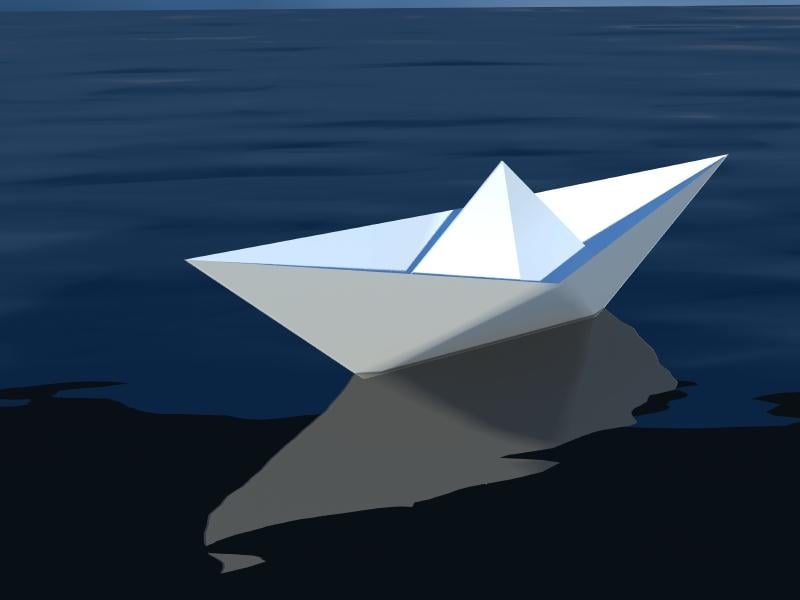
On 19 October 2015, broadcasters announced that Justin Trudeau, the 43-year-old son of the legendary Pierre Trudeau, had been elected with a strong majority as Canada’s 23rd prime minister. Three months earlier, however, when the election was called, very few would have bet on a Trudeau victory.
Elected leader of the Liberal Party of Canada (LPC) in 2013, Trudeau inherited a party in disarray and in debt, running far behind the Conservatives and New Democrats. In fact, some pundits had written off the once proud LPC that had ruled Canada for much of the 20th century. Yet less than three years later, Trudeau took his party from 36 seats to a comfortable 184 seat majority (out of a total of 338).
It was a stunning victory that virtually no one saw coming.
How had Trudeau done it?
A close examination of Trudeau’s strategy reveals a textbook application of blue ocean strategy (as shown in our case study, Creating a Blue Ocean in Politics).
Challenging the conventional strategic logic of political campaigns
As the election took off on August 2nd, it was evident that three key rules of competition had become entrenched over the years and were now governing the way elections were fought in Canada. In true blue ocean fashion, Trudeau broke all three.

Converting ‘Non-Voters’
In Canada’s previous election of 2011, ‘Non-Voters’ comprised almost 40% of the electorate. Many citizens did not bother to vote because they did not recognise themselves in any of the major parties. They were turned off by the negativity and cynicism that had gradually taken hold of the political process. These non-voters were essentially ignored in prior elections. Instead, political parties focused on their core voter segments - those who would vote for them no matter what - and augmented them with enough swing voters to reach the finish line.
Trudeau went in a different direction by focusing a great deal of attention on non-voters, who consisted mainly of the younger generation as well as Canada’s indigenous communities. He spent time in universities, was active on social media, dove into crowds, shook hands and took selfies, and he visited ridings with significant aboriginal populations. Trudeau’s positive campaign, devoid of negative attack ads, would appeal in particular to these non-voters. His campaign was anchored by a cleverly crafted tag line: ‘This is Canada, and in Canada better is always possible!", which worked to unite both core voters and non-voters.
By the time the final votes were counted, the popular vote had gone up from 61% to just under 70%, an increase of almost three million voters. On a net basis, Trudeau brought all those non-voters under the LPC tent. Without the non-voters, Trudeau would not have won the election.
Lowering the cost of acquiring voters
Traditionally candidates relied on negative messaging to bring their contenders down. They invested heavily in expensive TV ads. Justin Trudeau took a different approach by investing in highly innovative and often counter-intuitive, positive TV ads. In addition, he outworked his opponents in the field as he criss-crossed the country delivering his positive message in person. The video footage from these activities were then aired and diffused via both traditional and social media. With the buzz this created, Justin Trudeau was able to achieve a much larger reach at a cost well below his fellow candidates.
A ‘Blue’ Victory: applying blue ocean strategy to politics
While blue ocean strategy was developed initially to be applied in the business world, we see increasingly that the methodology can be applied in other settings, such as public policy and, in this case, election campaigns. Trudeau’s strategic move can truly be categorised a “Blue” Victory.

To set the stage, here’s a summary of the three ‘laws’ of blue ocean strategy that allow us to validate whether a strategic move is in fact ‘blue’. To qualify, it must:
- Challenge the industry’s conventional strategic logic by breaking established rules of competitive engagement;
- Seek out ‘noncustomers’ and de-segment the market to create large untapped markets, aka ‘blue oceans’; and,
- Break the value-cost trade-off by pursuing differentiation AND low cost simultaneously.
How do these blue ocean strategy laws apply in a political campaign context? Let’s rephrase them:
- Challenge the political conventional strategic logic by breaking established rules of competitive engagement;
- Seek out ‘non-voters’ to create large pools – blue oceans of potential voters; and,
- Break the value-cost trade-off by delivering a positive campaign and leveraging the free publicity through the media.
Trudeau’s victory as seen through the blue ocean strategy lens demonstrates that the key principles underlying blue ocean moves can be extended to other settings successfully. Blue ocean strategy need not be confined to business or corporate strategy. Much success can be achieved by seeking Blue Oceans elsewhere, even to help elect prime ministers and presidents!
-
View Comments
(8) -
Anonymous User
Trudeau is an effete neophyte who spent most of his adult life completely unemployed - save a few years teaching Drama class at High School.
He was interviewed extensively on national Television and it became clear that he knows not a thing about economics, central banking, finance, foreign policy, military strategy, geopolitics, trade.
He has absolutely no familiarity with the bureaucracy, no experience with unions (public sector or otherwise), no legal or constitutional understanding, and he's even unfamiliar with historical traditions and norms - neither does he even have an intellectual background.
His 'strategy' was purely populist - he's the Canadian Donald Trump: an instagram account with pictures of him and his wife, kissing babies, being 'nice' to people.
That's it.
Effete Canadian plebes are happy with him because 'they like him' and they 'didn't like Harper' (the previous PM) almost entirely based upon personality, and that's it.
Anonymous User
Oh, the disappointed neo-liberals who can't get over the loss of Harper!
I agree that Trudeau's positive campaign played a role in his victory. After a decade of Harper's hate-filled attack ads, the positive rush was contagious.
He has yet to screw anything up on the ground. Let's give him a chance, shall we?
Anonymous User
Sir/Madam, obviously you haven't the first clue as to who the Canadian Prime Minister is, this is not signed ? are you a coward ? Go spend your time criticizing someone or something else ! You are barking mad if you think for a moment Justin Trudeau is not genuine, he is second generation political and Canadian intelligence, hard working and grace you can't teach in school. If you have any more criticism, sign your bloody name Coward !
Frank Leeuwerke
Calgary, Alberta, CanadaAnonymous User
This was a great look into how Trudeau created a blue ocean - more politicians should apply Blue Ocean Strategy to their policies!
Anonymous User
I'm Canadian so I followed the election closely, and I have to say this one of the best and most insightful analyses of the election I've read so far. The author's application of Blue Ocean Strategy to the strategy of Trudeau and the LPC is highly compelling. More posts like this, please!
Anonymous User
Smart move of him to seek the support of non-voters instead of battling with his competitors to get voters to jump ship.
Anonymous User
Canada is to fresh water what Saudi Arabia is to diesel fumes
-
Leave a Comment





Seks telefon
18/05/2016, 07.08 pm
Really good article